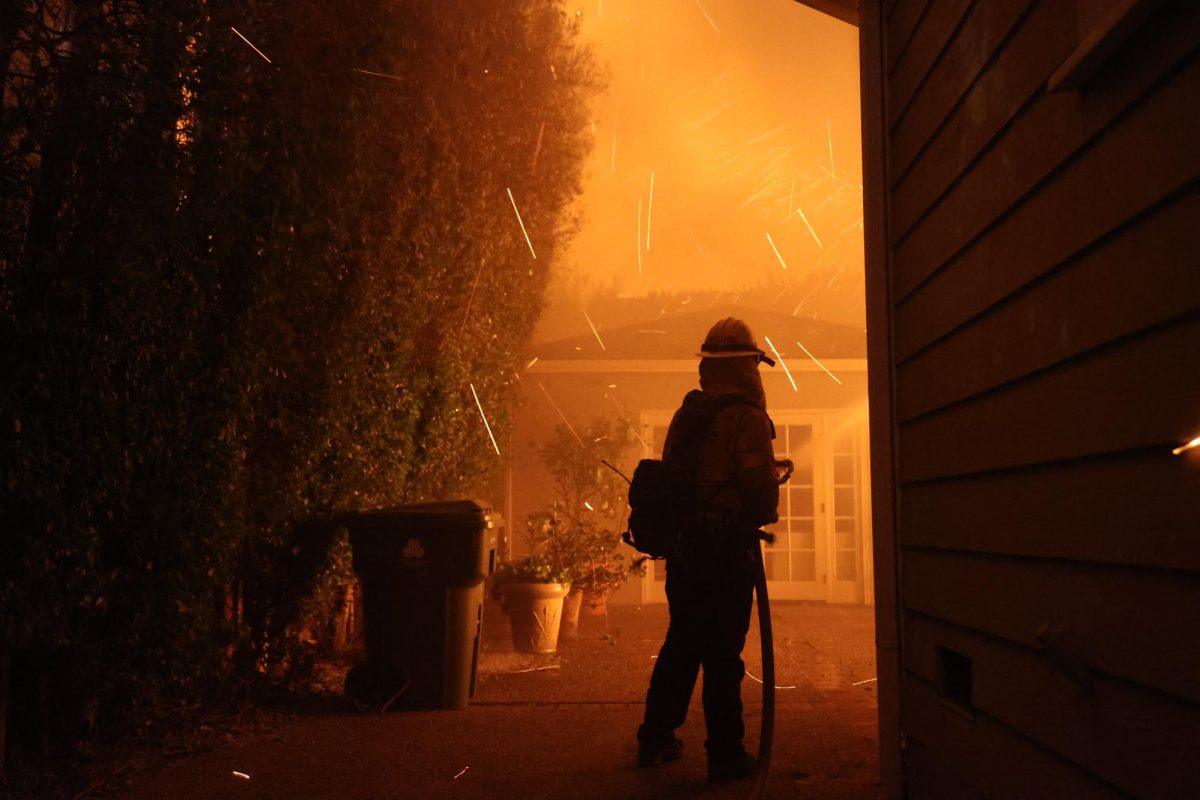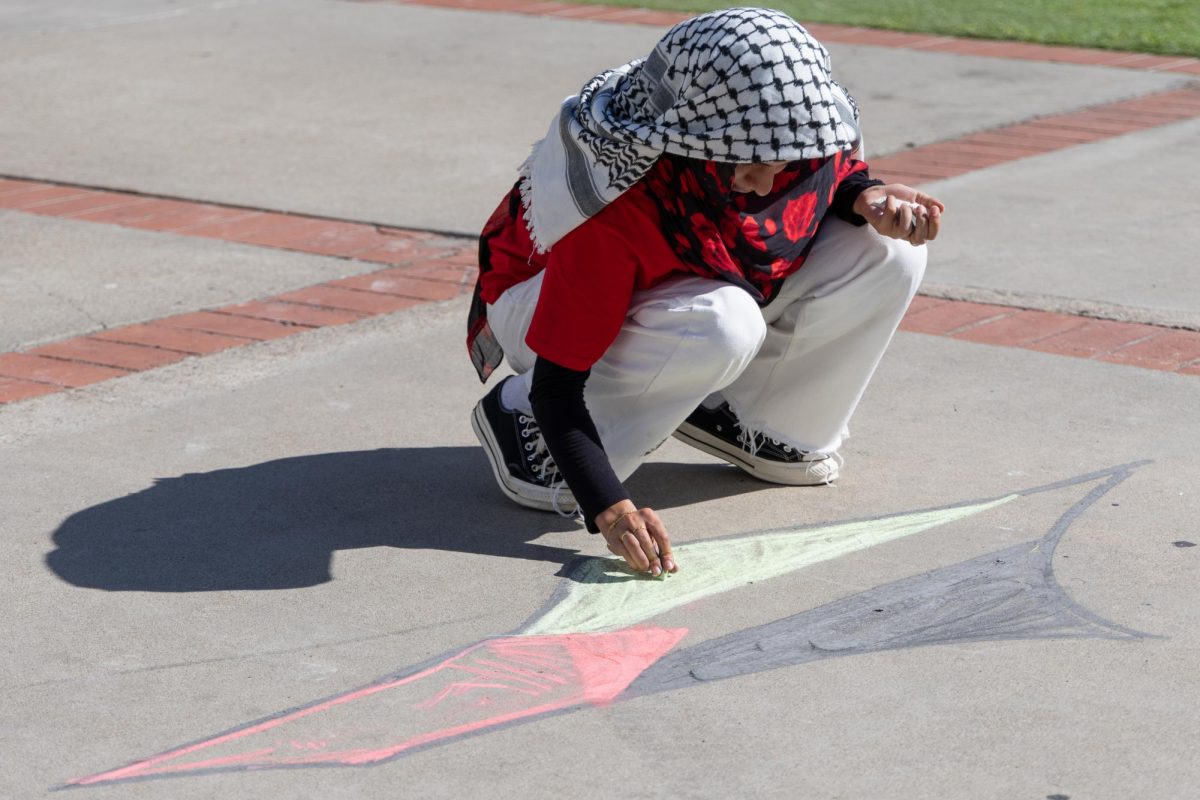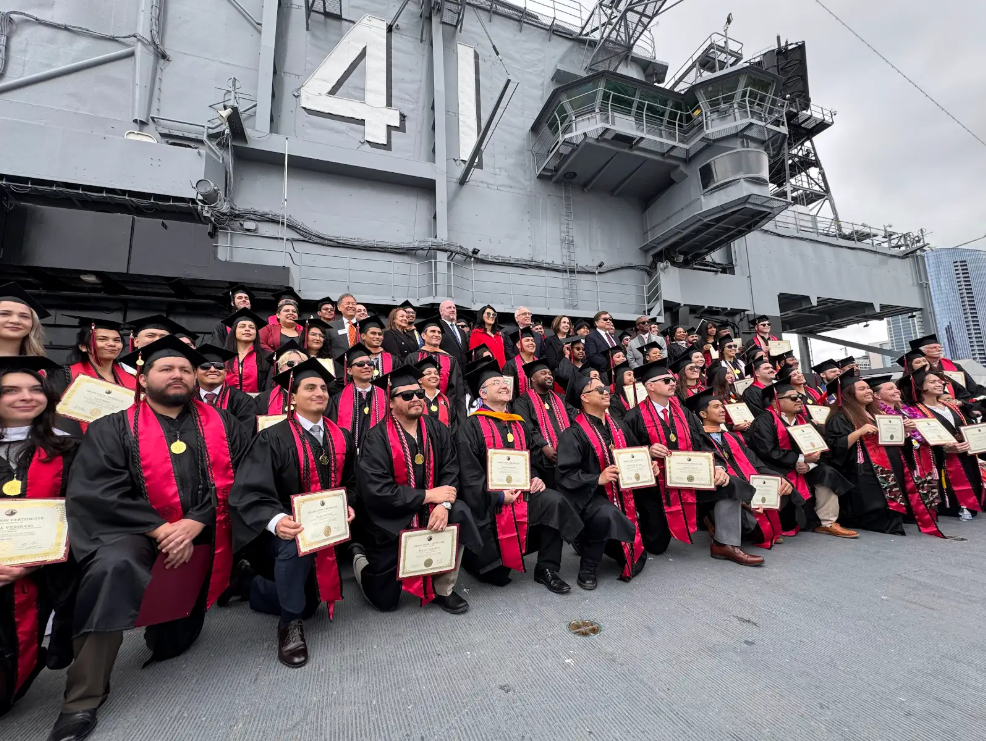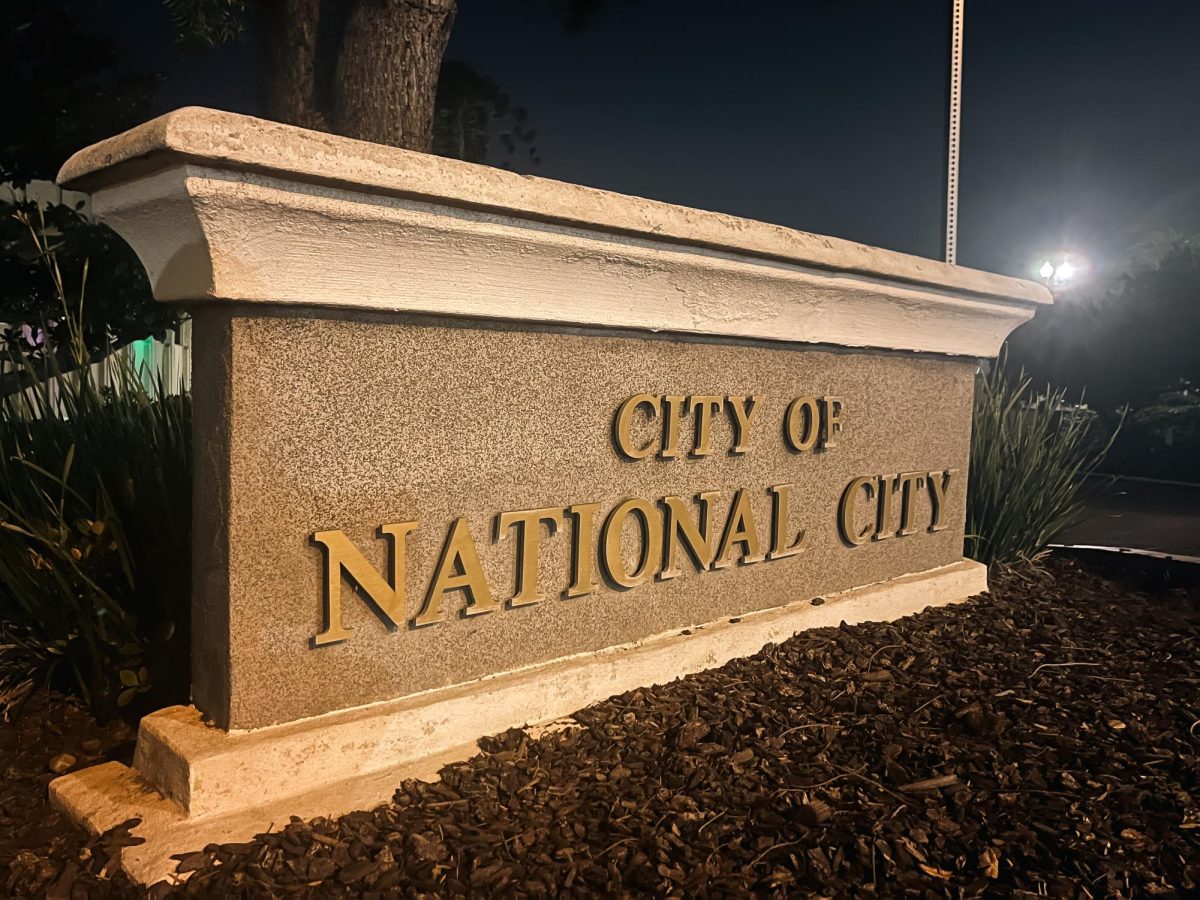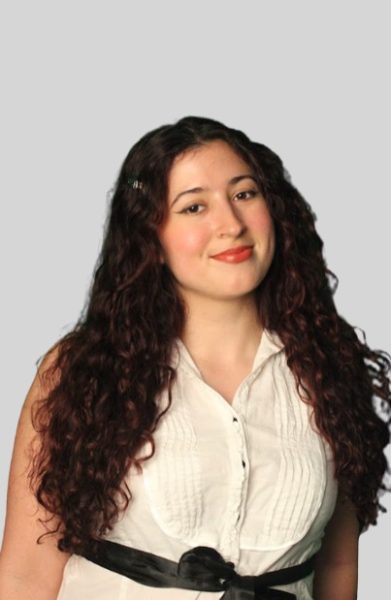Kyle Finberg didn’t realize that the smoke coming over the horizon was part of one of the biggest natural catastrophes he would ever see.
“I was actually on a drive when I saw a bunch of smoke in the distance. That was when I pulled over and looked at my phone and I found out that there was a massive fire going on,” Finberg said.
The SDSU junior was relaxing for his last winter break when he first witnessed the fires breaking out in Pacific Palisades. Immediately, he worried for his family who lived in the Palisades area.
“I called my uncle who told me that he was on a bike ride, trying to get home back to the Palisades, but he couldn’t, (the National Guard) was not letting him in. My aunt had to pack up their house, their dog and cats and prepare for evacuation,” Finberg said. “They’re still evacuated to this day.”
The news of the fires in Los Angeles shook the SDSU community, and for students like Finberg, the impacts of the disaster hit close to home. His hometown of Westchester was hit by evacuation warnings, dangerous air quality and unsafe tap water.
“When I first heard of the fires, it was heartbreaking. I used to play basketball in high school and Palisades was part of our league, so my initial thoughts were, wow, that’s horrible that this school could be burned down. This school I used to compete with, play at, it was really sad to hear that it was gone,” junior Aidan Owen said.
According to CalMatters, more than 16,000 homes and other structures were damaged or destroyed by the two major fires in Los Angeles.
Now, the Palisades and Eaton fires are completely contained. As one of the costliest natural disasters in American history, their impact on the community and the need for support has not wavered.
“A lot of family and friends of my parents and I have lost their homes. It’s just awful. It’s terrible. Not only are their homes gone, but there’s insurance problems for everyone. It’s just tragic,” Owen said. “I was just shocked. No one would ever have thought that something like this would just happen in LA.”
Owen, originally from Cheviot Hills, said he believes that the aftermath of the fires will be long lasting.
“You can’t just recover from that in a month. Soon, there’ll probably be less attention on it, but people will still be struggling,” Owen said.
Recovery and donation efforts continue as Los Angeles residents mobilize to deliver support. Last week, heavy rains created torrential mudslides in burned areas from the Palisades fire, taking pieces of homes and other debris across the Pacific Coast Highway. And with no vegetation to hold the soil, the effects were destructive. This phenomenon is just one obstacle that affected areas in LA will face when rebuilding eventually begins.
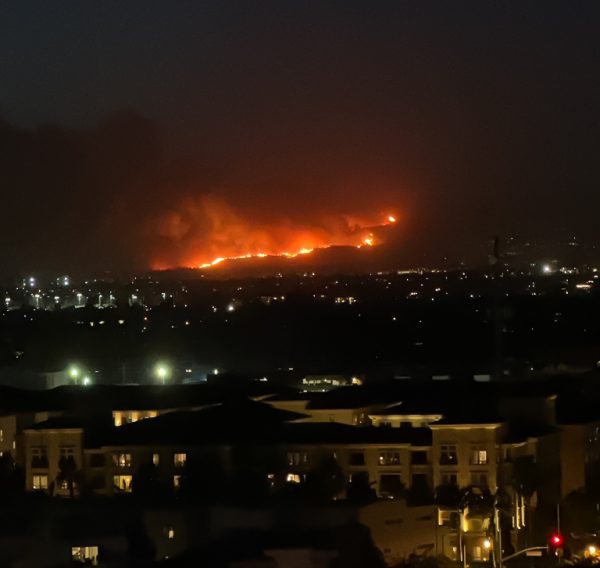
“I just knew that there was gonna be a bad long term impact and I wondered, what can I do to help? That first morning, I brought a bunch of water to donate to the YMCA,” Finberg said. “Then on, the YMCA near my house opened up as a donation center. I started doing volunteer work there every day.”
He described the community coming together during and after the fires, supporting neighbors and working to distribute supplies. Finberg said he continues to help when he can, as food and textile donations continue and donation centers are overwhelmed with organizing the goods.
“Now, I’ll still go to volunteer when I can since a lot of people still don’t have homes. I’ve delivered food to people and helped to organize clothes and other supplies,” Finberg said.
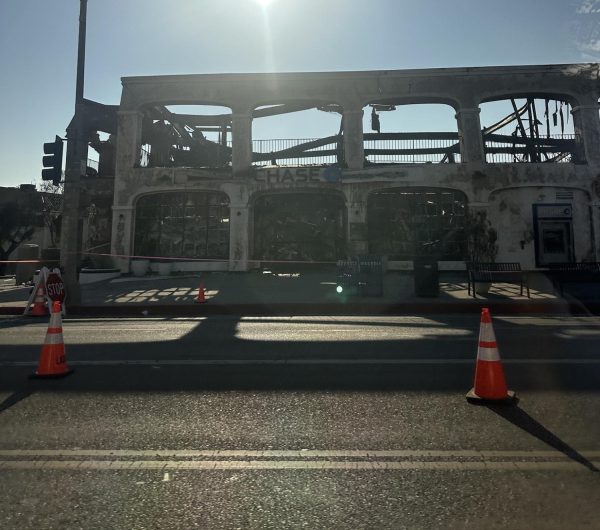
When the fires were raging, SDSU transfer student Christie Yeung worried that she may have to evacuate her Culver City home. The Daily Aztec news editor has a cousin and other family members living closer to the fire. They had already evacuated, and as she surveyed her things, she worried her family would be next.
“I just never knew you have so much stuff to pack. When I started packing, I just tried not to panic and just hoped that it wouldn’t happen. This is just a precaution,” Yeung said.
Thankfully, Yeung’s family didn’t have to evacuate. Yet, she says that the experience of picking through her things for what was ‘important,’ like old family albums and paperwork, was confusing and surreal.
Not long after the fires began containment, Yeung and her peers had to return back to school. The timing was jarring, and some said it felt unsafe to leave their family behind.
“I didn’t want to come back to school because I wanted to be with my family,” Yeung said. “I wasn’t sure what’s going to happen once I left.”
Christine Molina, Assistant Dean of Students at SDSU, said that the university responded to the aftermath of the disaster by delaying tuition and fee deadlines, which were due on January 17–only 10 days after the fires began. By looking through listed addresses, Molina said that SDSU was able to identify over 300 students who were directly impacted by the fires and reached out to them to offer assistance.
“Looking at the January time frame when this occurred, tuition and fees for the spring semester were also due right before classes,” Molina said. “That was the other item that did come up for some of our students, adjusting deadlines and how we might be supporting students for paying those tuition and fees.”
She says the school expects students’ needs to evolve in the coming months. In addition to the delayed payments, SDSU has offered one-on-one meetings with university staff to make adjustments to class schedules for affected students.
Uncertainty made leaving LA to start classes strange for many students. For Amara Nyja, who lives in Inglewood, graduating in December meant her post-grad life was off to a shocking start. She said the ash filled air and worries of breathing in toxic chemicals were an immediate impact, but after the fires were long dead, one thing continues to haunt her family: insurance rates.
“With everything that’s going on, you’d think that would be hard enough. But now we hear from the insurance that the rate literally doubled. It used to be $700, now it’s $1,400,” Nyja said. “And then next year, it’s only going to get higher. Because we’re so prone to wildfires, they just automatically raise it, and that’s just for a condo. It’s crazy.”
In Calabasas, junior Lindsey Belsky says she was hearing about insurance rates going up shortly after her family was close to evacuating their home.
“It’s been happening to a lot of people. It feels weird to be annoyed about insurance and my power going out when my aunt and nephew literally lost their home. There’s just not a lot you can do,” Belsky said.
This feeling of helplessness reminded her of the Woolsey fires in Malibu in 2018. She said Malibu was such a part of her youth and memories that seeing it in flames was painful. More recently, with the Pasadena fires, her parents’ caregiving company was on hold while the homes of their elderly clients were in danger.
“My parents actually had to go out a few times and help the people they work with evacuate. Some of them were too old to go on their own, and it’s scary to think what would’ve happened if my parents weren’t there,” Belsky said.
Before the fires ever began, several insurance companies, including Allstate, Farmer’s Insurance, and State Farm stopped insuring homes across most of Los Angeles for fear of increased risk. Nearly 5,000 LA policies were dropped by State Farm just last year.
The ones that remained mainly consisted of the FAIR plan, which is a public plan offered by the state of California to insurers that can’t find a private plan. Originally intended as a basic, temporary solution, people living in high risk areas are increasingly relying on it for their primary insurance.
However, the FAIR plan, and the others that remain, are rising in cost exponentially. And this week, the FAIR plan announced that it needs a $1 billion bailout after paying $4 billion to California residents affected by the fires. This means that insurance companies in California will pay half of the bailout, and the rest—that’s going to the people enrolled in the plan.
On top of rebuilding efforts, this fee and the high insurance is a devastating blow to Los Angeles residents.
“Now that we see insurance going up, it’s like the fires were just the start,” said Nyja.
Now that the initial shock has passed, rebuilding efforts, unstable land and the rising cost of insurance are just part of the bigger post-fire crisis building back home for students from Los Angeles.




